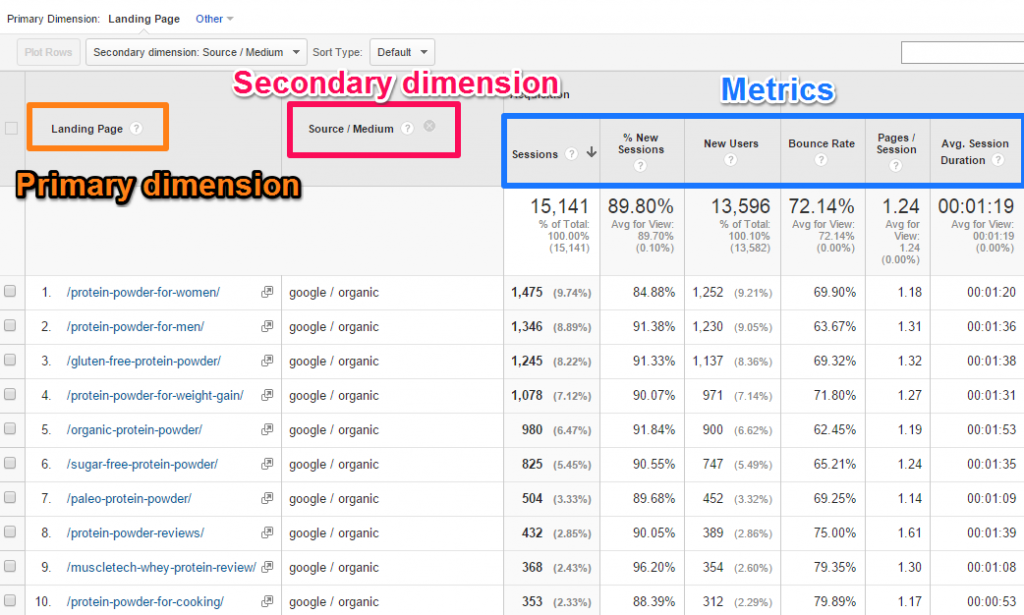Debunking the 'Secondary Dimension' in Google Analytics: Secret Insights
Debunking the 'Secondary Dimension' in Google Analytics: Secret Insights
Blog Article
Navigating the Depths of Additional Measurement in Google Analytics: A Thorough Exploration on Its Functionality
Additional dimensions, though relatively simple at very first look, nurture a wealth of untapped potential waiting to be utilized. As we begin on this journey to discover the nuanced capability of additional measurements, we will certainly discover just how this function can brighten patterns, unveil correlations, and ultimately lead the way for notified decision-making in the digital landscape (what is a “secondary dimension” in google analytics?).
Recognizing Second Dimensions in Google Analytics

Recognizing just how secondary measurements job is vital for leveraging the complete power of Google Analytics. By combining key metrics with second dimensions, you can get beneficial insights that drive educated decision-making and optimization methods.
Leveraging Secondary Dimensions for Data Evaluation
Structure upon the foundational understanding of how secondary measurements boost information evaluation in Google Analytics, the application of these additional layers of information becomes extremely important in removing valuable understandings for notified decision-making and optimization methods. By leveraging second dimensions, experts can dive deeper right into the performance metrics by including even more context to the main measurements, hence uncovering hidden patterns and relationships that may not appear at initial glance. This deeper level of analysis allows companies to better recognize individual behavior, identify patterns, and determine areas for renovation.
Additionally, secondary dimensions provide an even more detailed sight of the information, permitting segmentation based on numerous specifications such as demographics, tools, web traffic resources, and much more. This division facilitates a much more granular analysis, making it possible for companies to tailor their methods and campaigns to particular target market sections for improved targeting and personalization. Essentially, the strategic use secondary measurements encourages companies to make data-driven choices that drive development and success in the digital landscape.
Advanced Techniques for Additional Dimension Implementation
Checking out detailed techniques to harness the full potential of second dimensions in Google Analytics elevates the deepness and sophistication of data evaluation for calculated decision-making. One advanced strategy for carrying out additional dimensions is the use of customized measurements. In addition, integrating additional dimensions with sophisticated sections can provide even extra granular insights by using multiple layers of segmentation to the data.
Interpreting Insights Via Secondary Dimensions

When analyzing insights via secondary dimensions, it is vital to take into consideration the context of the data and just how different measurements engage with each various other. For instance, understanding which details traffic resources cause greater conversion rates or identifying which devices customers favor for making acquisitions can supply actionable insights for maximizing advertising campaigns and boosting total internet site performance. By very carefully analyzing the data with second measurements in mind, businesses my website can make enlightened decisions that drive meaningful results and improve their digital visibility.
Enhancing Efficiency With Second Dimensions

One essential method to optimize performance with secondary measurements is by segmenting information a lot more granularly. This enables you to separate details elements that might be influencing your metrics and acquire a better understanding of what drives success or failing in your digital campaigns. By incorporating secondary measurements such as 'device classification' and 'touchdown page,' you can pinpoint which tool kinds are most efficient for specific touchdown pages, allowing you to customize your approaches accordingly.
Additionally, using click for info second dimensions can assist you determine trends, patterns, and connections that may not appear when assessing data with primary measurements alone. This much deeper level of analysis can lead to more informed decision-making and eventually improve the total efficiency of your internet site or digital advertising and marketing campaigns.
Verdict
To conclude, additional dimensions in Google Analytics play a vital role in improving data analysis and supplying deeper understandings right into internet site efficiency. By utilizing advanced techniques and translating the information properly, businesses can optimize their methods and boost overall efficiency. Recognizing the functionality of additional measurements is vital for making informed decisions and driving success in the electronic landscape.
By leveraging secondary dimensions, analysts can dig deeper right into the efficiency metrics by including more context to the key dimensions, therefore discovering hidden patterns and correlations that may not be obvious at very first glance. One sophisticated method for applying secondary measurements is the use of custom measurements.Having mastered sophisticated methods like personalized measurements and regex for additional dimension application in Google Analytics, the following critical action is analyzing the useful insights derived with these sophisticated data division methods. Translating insights via second dimensions involves analyzing the connections in between the primary and secondary measurements selected, discovering patterns, patterns, and connections that might not be right away obvious when looking at the information in its whole.When translating insights via secondary dimensions, it is crucial to think about the context of the data and exactly how different measurements connect with each other.
Report this page